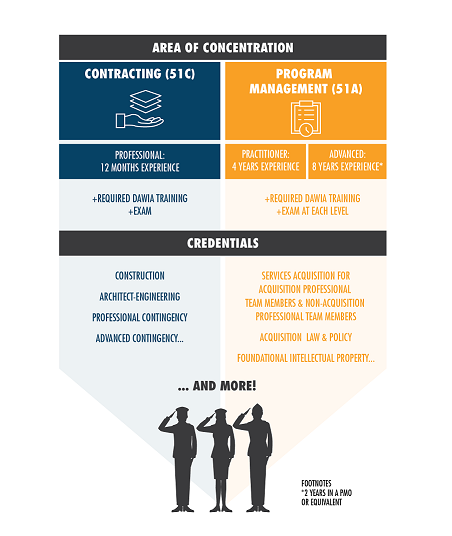Active Component and U.S. Army Reserve (USAR) Career and Assignments Management. Acquisition FA 51 officers are centrally managed by the Acquisition Management Branch (AMB) within the Force Sustainment Division, Officer Personnel Management Directorate, Human Resources Command (HRC). AMB provides U.S. Army Reserve career and assignments management. Army Reserve FA 51 officers are centrally managed by the AMB at HRC, regardless of basic branch affiliation.
Army National Guard (ARNG) Career and Assignments Management. ARNG Title 10 FA 51 officers assigned to Area of Concentration (AOC) A (Program Management) are managed by the ARNG Human Capital Management Office in coordination with the ARNG Acquisition Management Office. ARNG Title 10 FA 51 officers assigned to AOC C (Contracting) are managed by the ARNG Human Capital Management Office in coordination with the NGB Joint Staff Acquisition Office. ARNG Title 32 FA 51 officers are managed by their respective State Guard in coordination with the ARNG Acquisition Management Office.
Officer Development Model. The foundation of FA 51 officer professional development is the experience, education and training required to obtain Defense Acquisition Workforce Initiative Act (DAWIA) certification for the assigned certified acquisition position. All acquisition officers can expect to have ample opportunities to serve in diverse assignments and receive the training required to attain DAWIA certification. Professional military schooling, acquisition-unique training and experience as well as a strong performance over time help officers to be competitive for subsequent positions with increasing responsibilities and challenges.
Policy and Law on Acquisition Functional Area Certification. Officers are required to obtain a professional certification in accordance with the DAWIA, Public Law 101–510, 10 USC Chapter 87 and other DOD directives and instructions. Certification levels are assigned to each acquisition position based on AOC. AOC A Program Manager Practitioner is required for all captain, major, and lieutenant colonel positions, and Advanced is required for all colonel positions. AOC C) requires Contracting Professional, which is the only certification for all ranks and positions. All certifications build upon acquisition skills and competencies gained while serving in an acquisition position, including education, training and experience against established criteria. Information on current certification requirements can be found in the DAU catalog at https://icatalog.dau.edu/.

















